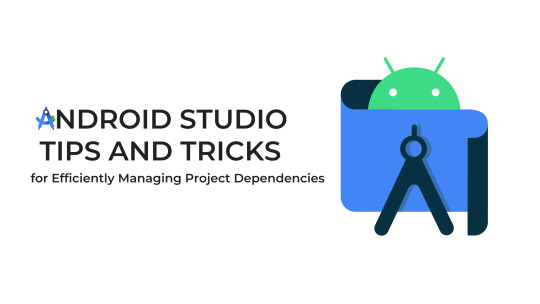Don't wanna be here? Send us removal request.
Text
Leverage expert Android app development services by Quokka Labs to build custom, scalable, and feature-rich mobile applications for your business.
#Android app development#Android app development company#Custom Android App Development#Custom Android App Development Company
0 notes
Text
Explore our in-depth case study on custom Android app services. Discover how Quokka Labs delivers tailored solutions to enhance business efficiency and user experience.
#custom android app development#android app developement company#android app development#custom android app development services
0 notes
Text
Android Studio Tips and Tricks for Efficiently Managing Project Dependencies

No matter how efficient a developer is, everyone comes across a moment when they feel miserable managing the Android app dependencies. This feeling could arise for multiple reasons. Maybe they are setting up a new project, and some dependencies are incompatible with the module. Maybe their version expired or something else. This blog shares some tips and tricks for dealing with project dependencies.
Refer to These 5 Android Studio Tips and Tricks to Manage Dependencies
It is hard to imagine the Android app development project's success with incompatible libraries, plugins, and functionalities. We must adapt and implement some approaches to maintain reliability, agility, and efficiency. These Android Studio Tips and Tricks a developer generally prefer mentioned below:
Project Modularization
No project becomes a reality overnight; you must have built different sections independently. For each one, you have a configured features file. Whenever an issue occurs in any app section, you can navigate to that file to make the necessary adjustments in feature dependencies. However, coating hard code could be problematic for some projects. We suggest prioritizing modularization to manage your app code and dependencies perfectly. It will manage duplicity, code organization, and app structure.
Creating Separate Build.gradle Files
Each project module is developed keeping the specific context or feature in mind; thus it’s better to store the relevant dependencies in a separate build. Gradle files. It could be related to UI/ UX, networking compatibility, or other important parts of the projects. Creating such files makes dependencies organization manageable.
Gradle Version Catalogs
If you are accessing Gradle 7.0, it has some exciting features to manage project dependencies. It avoids conflicts, driving efficiency and consistency. You can modify and share, centralizing the dependencies. Also, it enables access to third-party plugins for additional functionality support and drive automation. Define the version for each project and create library bundles. It improves the build time, optimizing performance and efficiency.
BuildSrc Directory
Each Android project has a directory called buildSrc. So many things are ongoing to build the product, like access of custom plugins, configuring dependencies, and customizing functionality tasks. Gradle build is responsible for automatically compiling and interpreting all the classes and scripts. The best thing about this Gradle build process is that it keeps the project code organized and manageable. You can refer it in future for a quick modification to existing projects or to reuse in new projects. Moreover, what attracts the developer here is its rapid auto edit and synchronization of code to the buildSrc folder, keeping the logic up-to-date.
Default Implementation Through Build.gradle File
We are listing it last as it's not a best practice. However, for small-level projects that don’t need frequent upgrades, it can work for apps with basic features. So, in this practice, all the dependencies are put together in build.gradle. Also, we don't need to launch any tools here. Furthermore, if at some point you need to modify, you need to do it manually. Due to the discomfort of duplicate files and the inflexibility to experiment it isn’t preferred much.
Wrap Up:
When initiating an Custom Android app development project, each action impacts its success. As a developer, you must know some Android Studio tips and tricks along with hands-on experience on Gradle. Ti support is used to automatically optimize and manage dependencies. Before taking any approach mentioned in this blog, consider your project requirements, complexity, and size, as each one delivers different results with proper code organization.
#android app development#android studio#android app developer company#Android app development company
0 notes